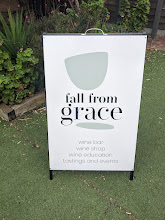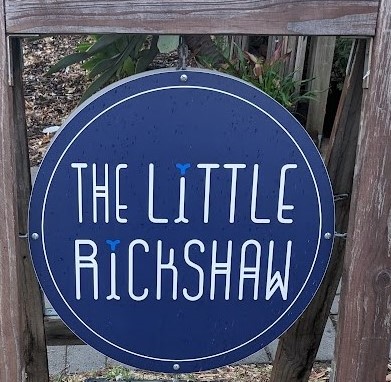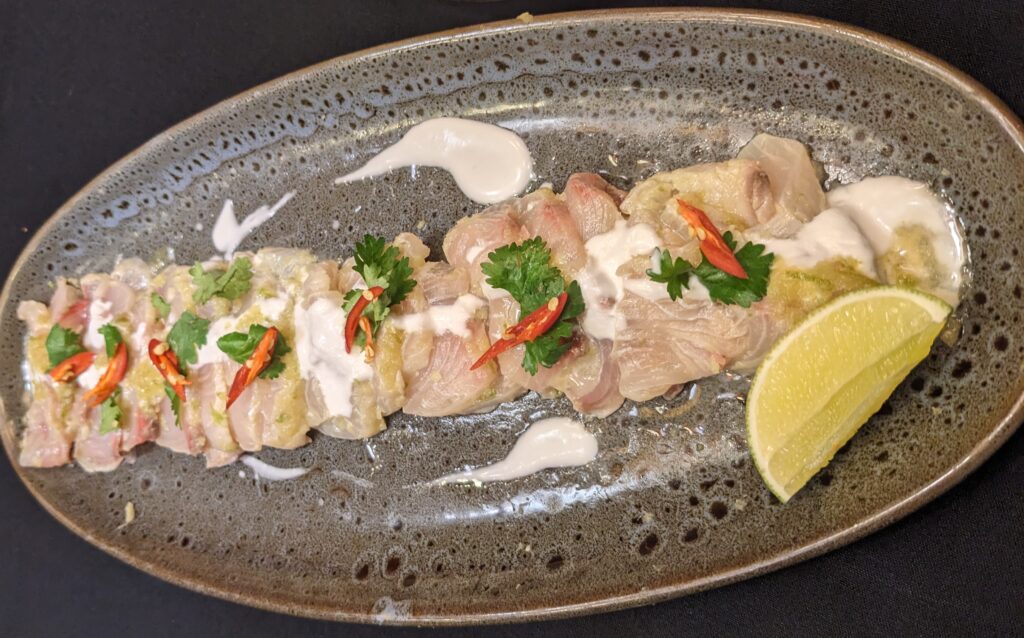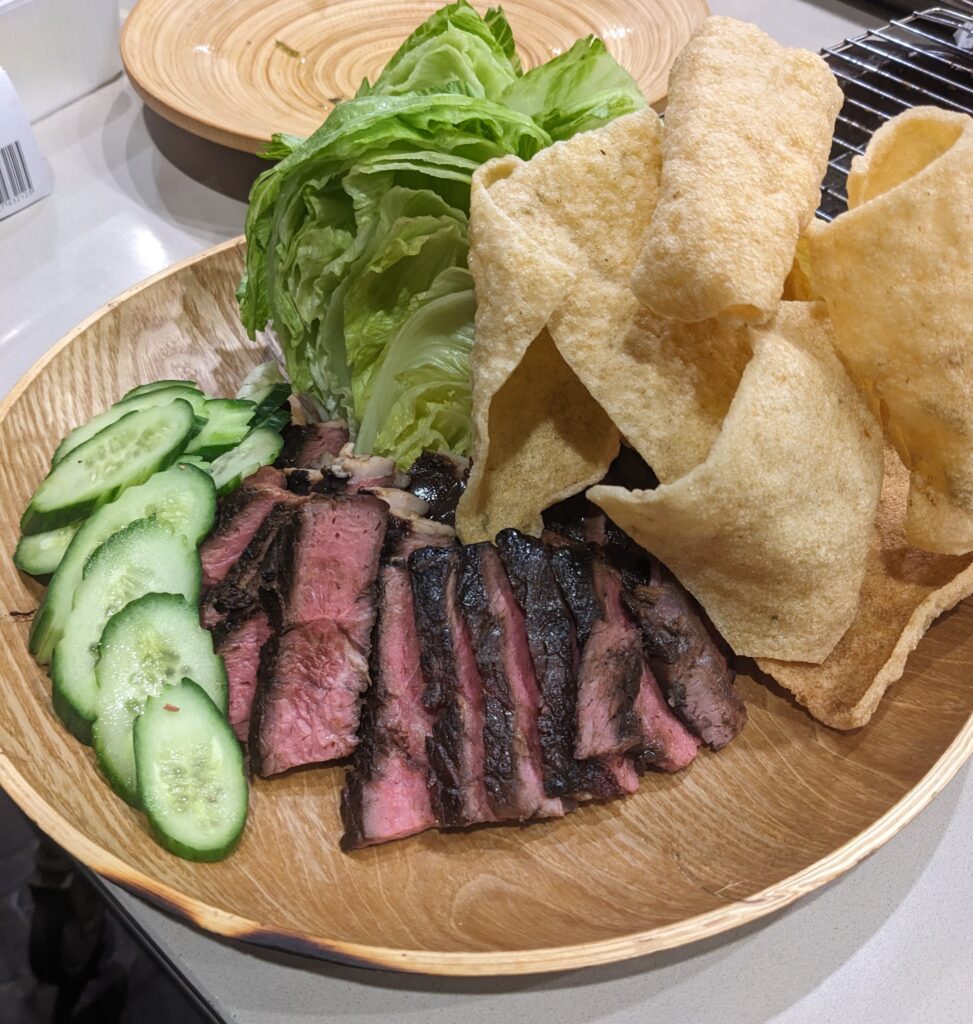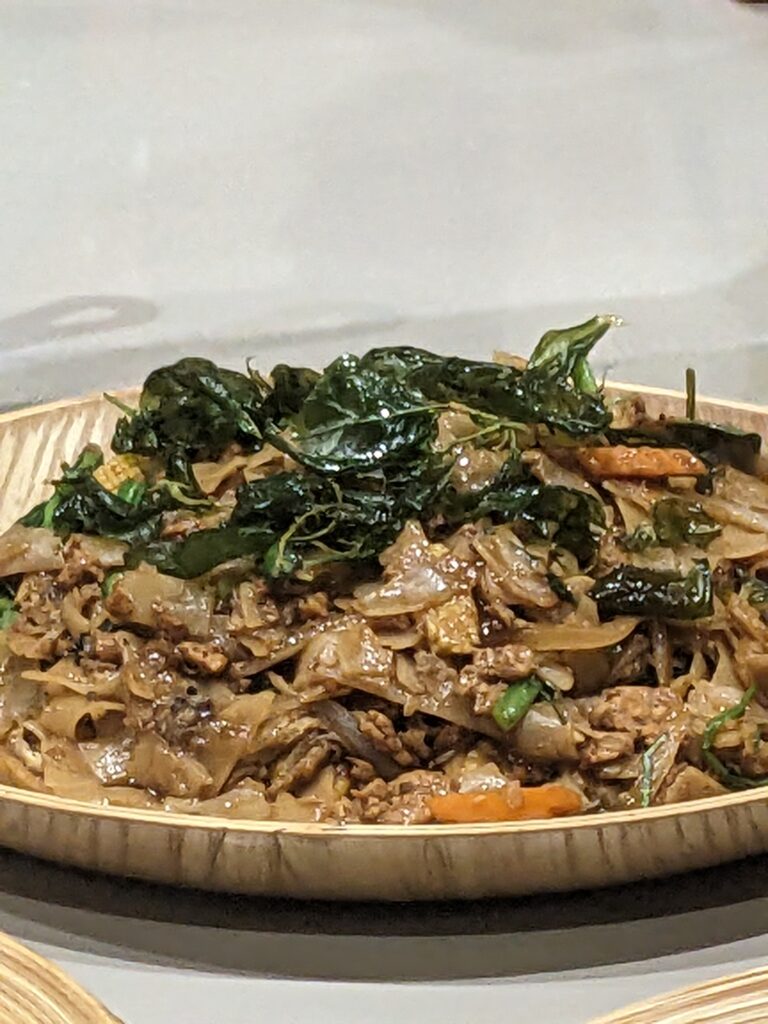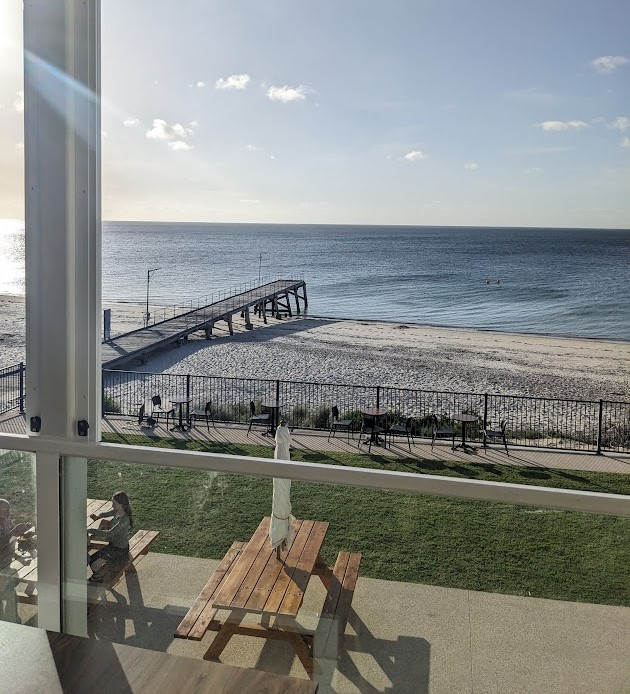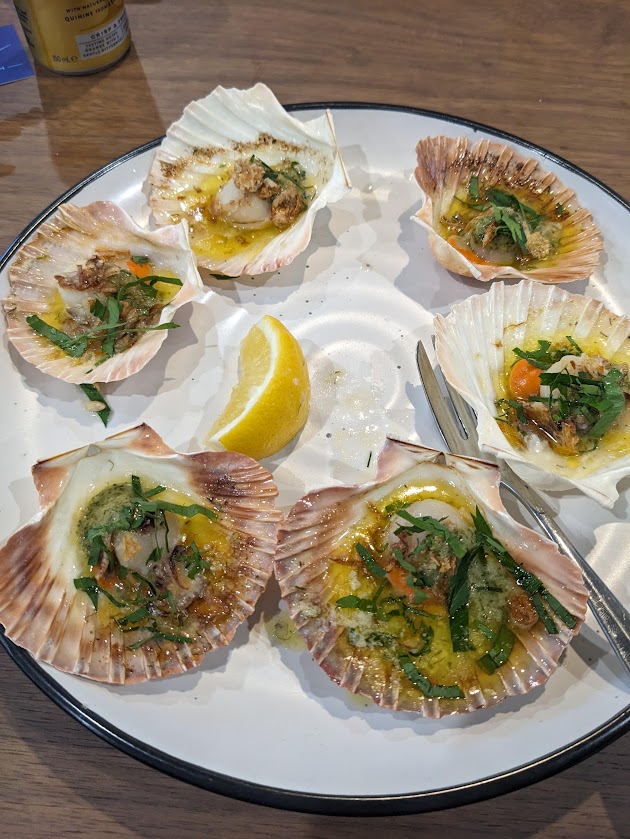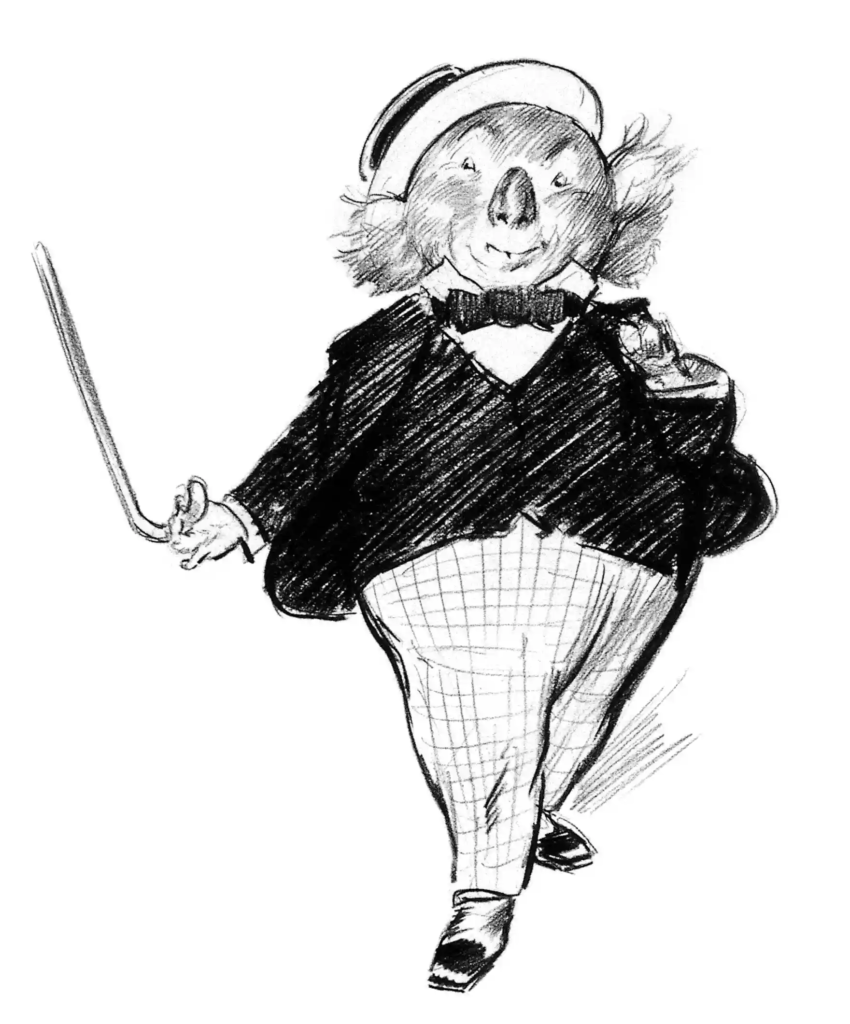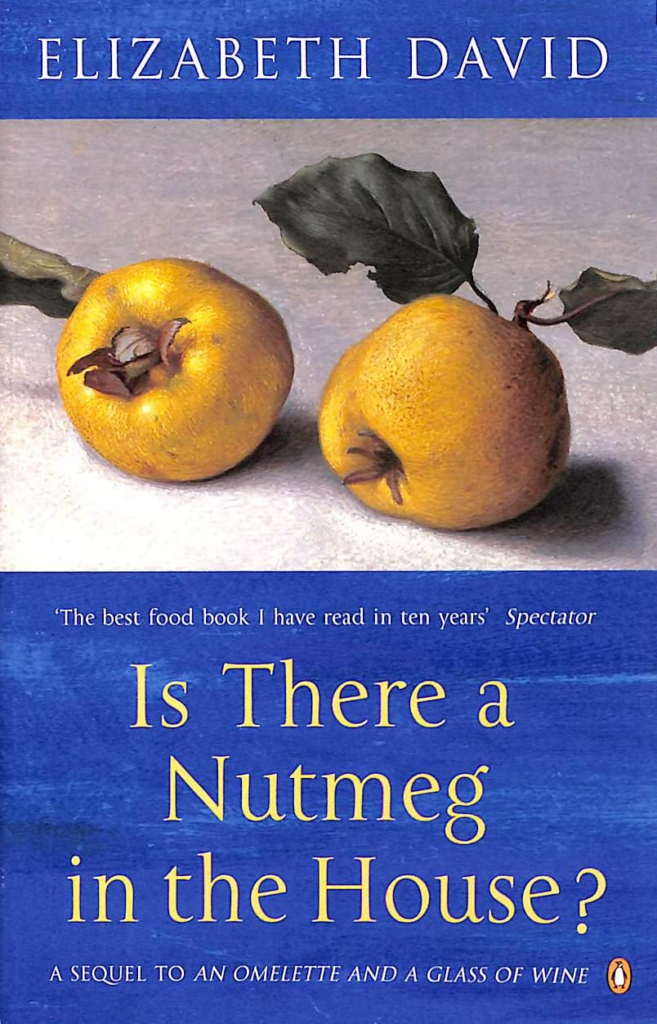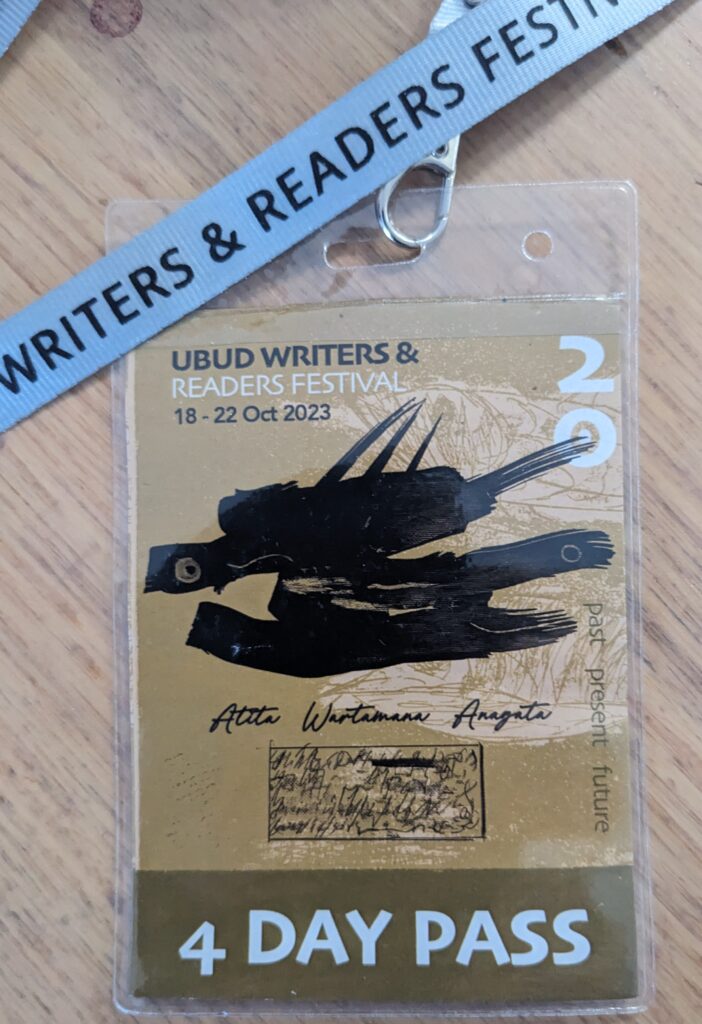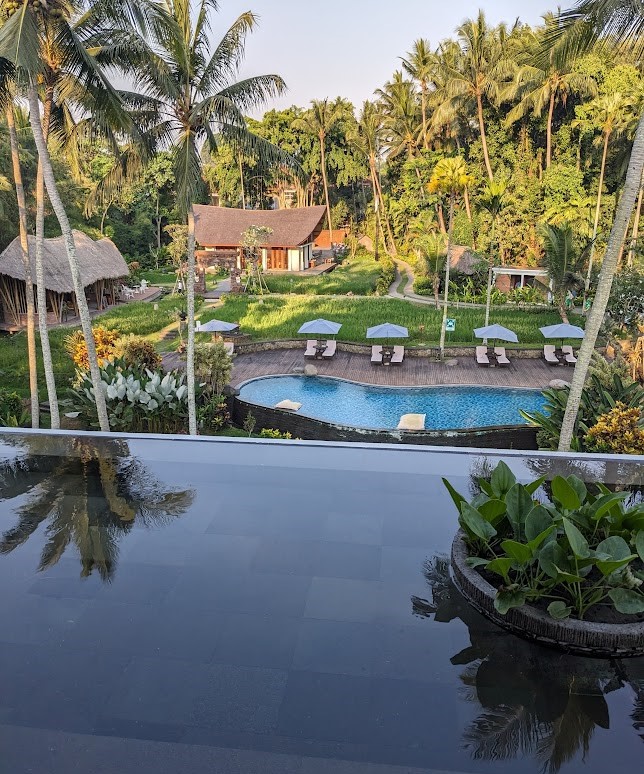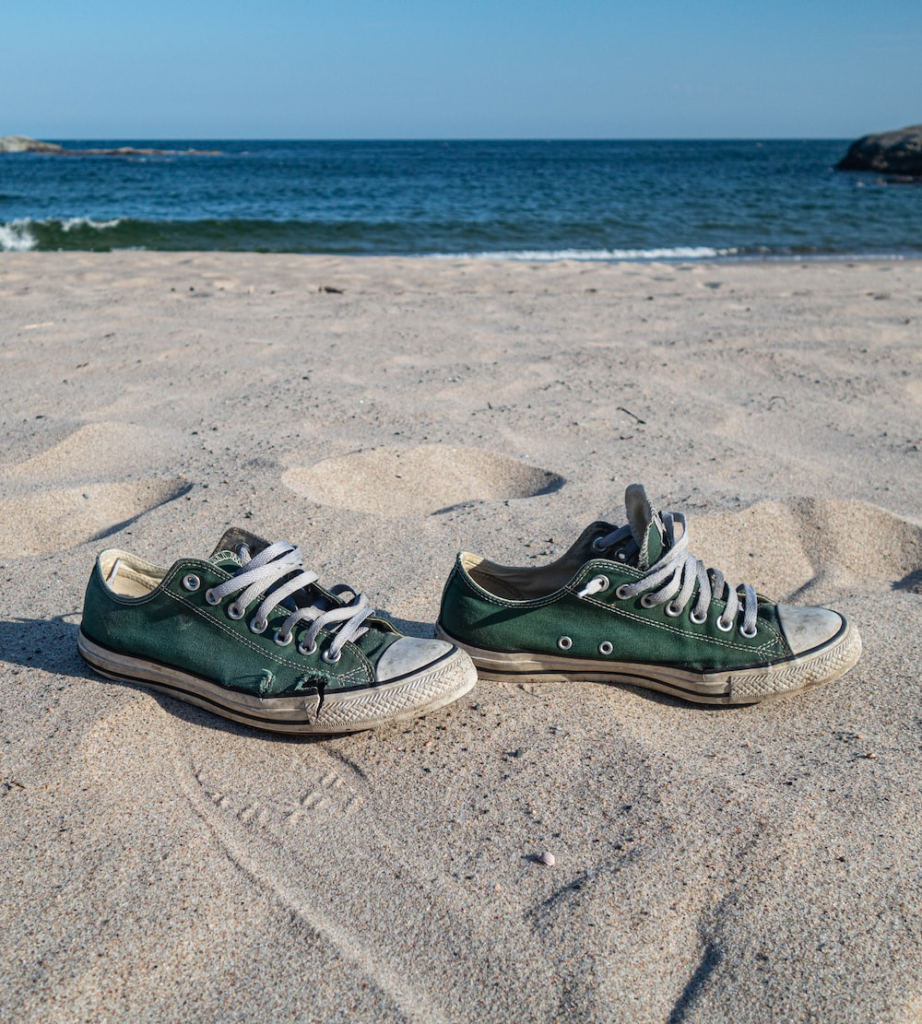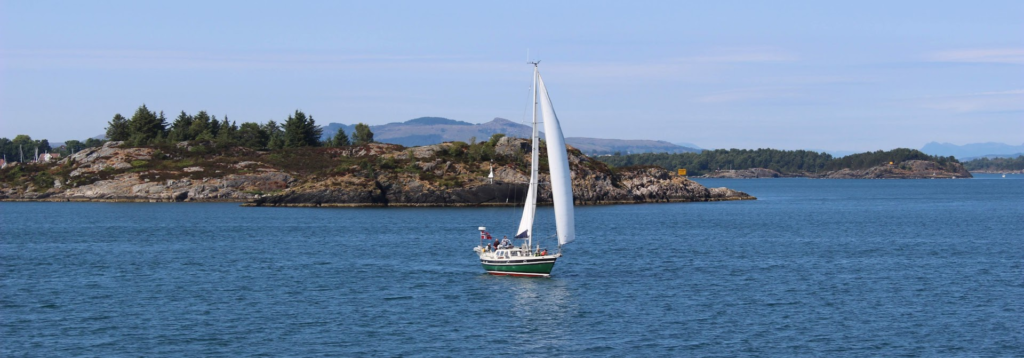An anniversary. An invitation for a secret rendezvous. A wine bar. A degustation menu of wondrous delight.
Hidden behind the petrol station on South Road is the old village of Aldinga. There you will find a bakery, a pub and an area known as the Temperance Precinct, because the beautiful stone building at its centre, built around 1868, was once Hart’s Temperance Hotel, the proverbial pub with no beer – or alcohol of any sort.
Temperance means moderation or restraint in the indulgence of the appetites or passions – which is ironic, as there was nothing about restraint or moderation in the memo. Ironic, too, the name of the wine bar in the Temperance Precinct: Fall from Grace.
Fall from Grace is the perfect place for all seasons and any events: cuddle up in the cosy front room with a fireplace for a quiet tete-a-tete, or gather in the sunlit garden for a birthday celebration or a wedding.
Apparently, Fall from Grace was buzzing over the long weekend. On Thursday, we had it all to ourselves. Owner and hostess, Margot Muir, gave us a warm welcome and settled us by the window with a glass of bubbles each. The One & Only chose the Loftia Vintage Brut from Kate Laurie at Deviation Road, in the Adelaide Hills. Mine was a gorgeous pink Tasmanian creation, fruity and smooth: NV Bellebonne BIS Rosé by Natalie Fryar. One glass was not enough! The Bellebonne website describes this elegant style thus:
“Made from 100% Tasmanian Pinot Noir, this is delicate pink with salmon blush and super fine bubbles. The aromas are a meld of strawberry, marzipan, Turkish delight and buttery pastry. While the flavours are subtle, there is a delicious roundness in the mouth set against a fine tannin finish with the barest touch of bitter orange pith.”
Margot Muir has worked in the wine business for years and knows her wines and her winemakers, and we had all the time in the world to talk wine with her. With shelves full of European wines, as well as many that have been locally sourced, Margot also offers an outlet for boutique wineries in the region that don’t have their own cellar door.
As there was plenty of time for a second glass before dinner, we decided to order a small cheese platter. Margot soon reappeared with two great cheeses of overly generous proportions: a taleggio-style Monte Rosso from Section 28 Artisan Cheeses in the Adelaide hills, and an Ash Grove Wine Glass Bay Vintage Cheddar from Tasmania. In addition, there was a dish of pickled grapes (Margot’s own) and another of olives.
Taleggio originally came from the Val Taleggio in northern Italy, hence its name. This semisoft cheese is washed in brine, which creates a thin rind around a silky-smooth centre. It also has a strong aroma that belies its mild, buttery, gently fruity flavour. I didn’t mean to eat it all, but it would have been rude not to. The vintage cheddar was equally moreish. Made like a traditional cheddar, this tasty vintage cheese is aged for up to 14 months.
Ashgrove’s began back in 1908 with a few sheep, and a herd of dairy cows. Brothers, Michael and John Bennett who were born and raised on the farm, produced their first vat of cheese in 1993 and have never looked back. Today they produce more than two dozen cheeses.
I could happily have mooched comfortably here all night, but eventually, it was time to peel ourselves away from this peaceful setting and wander down the hill for dinner at The Little Rickshaw.
Since we first moved to the Fleurieu four years ago, I have been hearing great reports about this small south-east Asian restaurant, but this is the first time we have managed to get a booking. It has been incredibly popular since it opened in 2019. Trip Advisor and Facebook both give it five stars, and I am happy to concur.
TLR can seat only forty diners, so it is well worth booking in advance if you want to get a table. This is not a spur-of-the-moment diner. Casual, rustic, delightful, it has been created from a bunch of sheds and outbuildings at the northern end of Aldinga. It is open for dinner on Thursdays, Fridays and Saturdays, or you can settle in for a long lunch in the enclosed courtyard on a Sunday afternoon.
Gourmet magazine wrote that “the soul of The Little Rickshaw in Aldinga is Vietnamese, but the beautifully presented banquet menu roams more freely. Prepare to be surprised and delighted.”
We were.
In 2017, Mike and Trinh Richards opened The Little Rickshaw which apparently began its life as a café serving banh mì, but that has long since evolved into a classy restaurant, with very comfortable chairs and an eclectic collection of tables and Persian rugs. And the Chef’s menu is a fabulous exploration of Asian fusion cuisine. Thai and Vietnamese cuisines meet modern Australian in a plethora of dainty dishes that includes plenty of locally sourced seafood.
But first, a glass of Riverland Nero d’avola that rolled smoothly over the tongue and down the throat without a murmur. I wasn’t sure that such a fruity wine was the best choice to accompany a delicately flavoured SE Asian menu, but I have a weak spot for a good Nero d’avola. Originating in Sicily, this grape variety produces a deep red thick with strong black fruit flavours and a touch of spiciness, reminiscent of Shiraz, but smoother, and is perfectly suited to the dry, warm climate of the Riverland.
Our first three dishes were all seafood based: a scallop, the size of which I haven’t seen since we lived in Sydney; a creamy king salmon sashimi, and octopus. The seafood was fresh, the textures fantastic, but I was a bit disappointed that their delicate flavours were lost beneath some wonderful but overtly flavoured sauces. Cooked in wagyu fat and a kim chi reduction, the octopus tasted more like pork. And the creamy flavour of salmon sashimi was unfortunately overwhelmed by wasabi oil. Nonetheless, each dish was full of flavour and beautifully presented.
The next dish was based on a Chinese street food: a duck and water chestnut taro puff. The crispy, nest-like taro casing melted in the mouth to reveal the fabulous flavour of duck and the crunch of water chestnut. An instant success with us both, and a magical creation. Our host tried to describe how it was made – and sadly, the effort involved means I won’t be trying to reproduce it at home – but the lesson in how to spin taro into golden fairy floss was amazing.
An extra dish of deboned chicken wing stuffed with prawn and accompanied by a tamarind sauce was also a star turn. I adore tamarind sauce, and the blend of chicken and prawn was scrumptious.
Trying not to flag too soon, we asked our lovely waitress to slow down the delivery of subsequent dishes, so we could pace ourselves, and she very sweetly obliged us. Yes, it was entirely our own fault that we had pre-empted this banquet with far too much cheese, but nonetheless we wanted to enjoy every mouthful.
Pork and cabbage dumplings, which have long been favourites of the One & Only, were followed by a spicy fried rice that we both raved about. Then, providing the perfect balance, a cool green papaya and mint salad arrived to accompany a deliciously rich serve of slow braised beef ribs.
We had safely reached the end of the savoury dishes, although it must be admitted that a small portion of beef came home with us for lunch the next day.
The penultimate dish was a light palate cleanser of fresh fig and sorbet of extraordinary complexity: lychee, coconut, salted caramel and chilli. And the grand finale? A gorgeous Vietnamese Crème Caramel served on flakes of toasted coconut and peanut crumbs with an accompanying dollop of duck yolk ice cream. Why Vietnamese? we asked. It proved to be an indigenized version of the traditional French crème caramel, made with coconut milk in a land where dairy products are scarce. Still densely flavoured, and silky on the tongue, it was definitely lighter on the stomach than the cow’s milk variety. With a whisper of crunch from the coconut flakes, and the ice-cream to soften the sweetness, it was quite the most beautiful dessert I can ever remember eating.
An evening to savour for months to come, Aldinga Village did us proud for our anniversary celebrations. My only regret was simply that walking home was not an option…


